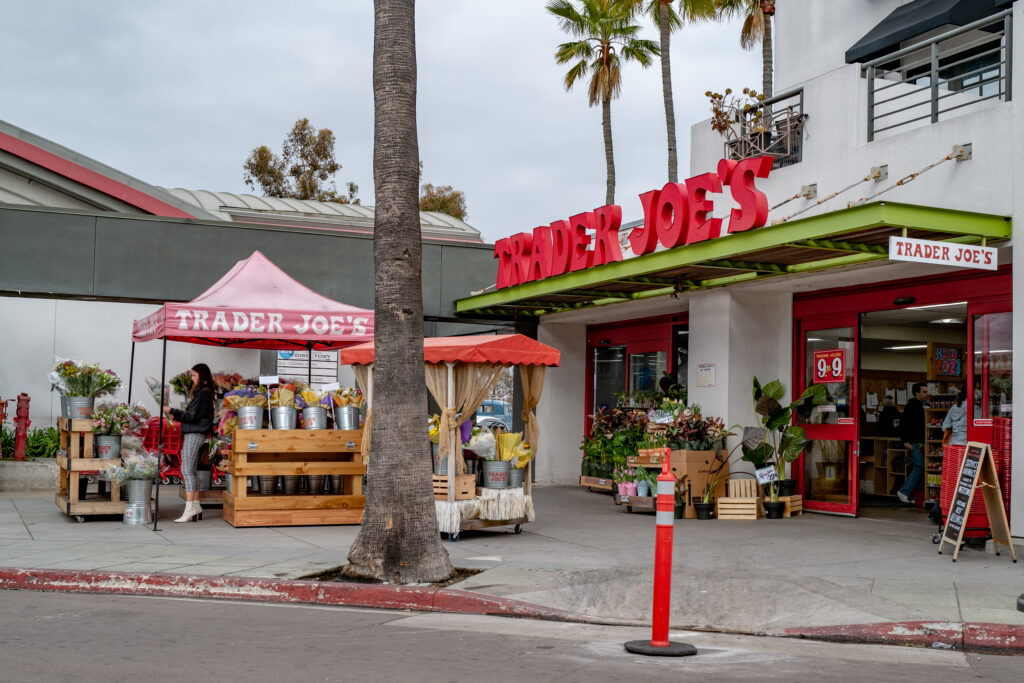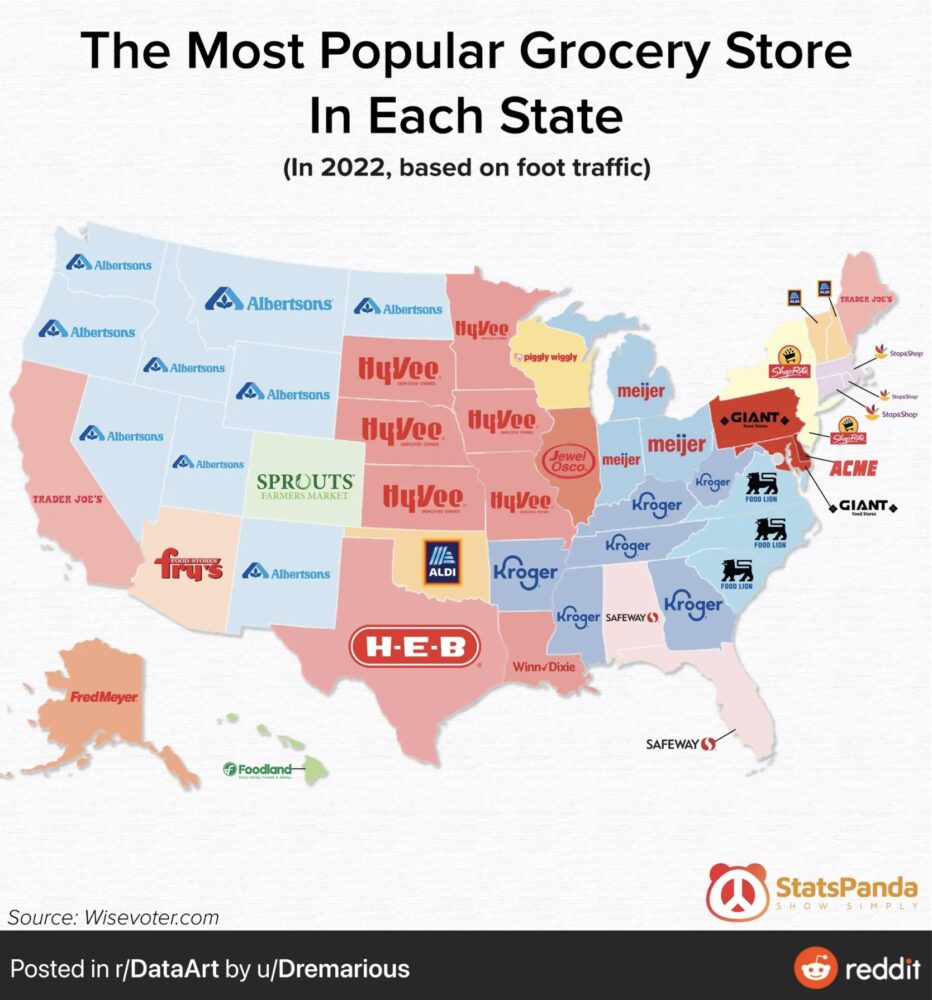I will never be a fan of that narcistic cesspool called social media. The last light of hopefully meaningful online interaction extinguished with the shuttering of Google+ over April Fools 2019. That said, Elon Musk’s buying and revamping Twitter—and releasing through journalists the so-called “Twitter Files”—brings some hope that a bastion of free speech and reasonably intelligent commonsense dialogue can survive and thrive on the Internet; oh, and have room enough for narcissists and the rest of us.
As such, I now spend some time each day on Twitter. I joined during the early days, in late December 2006. Long time, I know. But until a week or so ago, I also had been mostly inactive. This morning, I had a good object lesson in the kind of misinformation that spreads across any social media platform—and in the most innocuous, likely unintentional, but worrisome way.
That’s One Busy TJ’s
Someone shared the above graphic, which flowed along the tweet stream. My attention immediately riveted to my native home of Maine, where Trader Joe’s is supposed to be the most popular grocery store. Seriously? One location is open, granted in largest city Portland, and that’s enough for TJ’s to take the popularity crown? That store gets more “foot traffic” than all the others—across the entire state—combined?
I can’t speak for other inaccuracies, and they’re unnecessary to the point: This kind of graphic, which, at the least, already made the rounds at reddit will get shared across social media. Because: Who doesn’t want to know which grocery is more popular where they live?
The problem isn’t misinformation, which, by the way, I highly oppose censoring. Elon Musk is right to pull back on such arguably arbitrary actions. The problem is how easily people accept and share, without regard.
Don’t Be Bitten
We old dogs remember the early Information Superhighway. Of all the tricks we learned and barked: Don’t believe everything you read on the Internet. Maybe you should pay attention to our yowling warnings before something you regard as true bites you. A graphic like the one above is fun, but don’t you believe it—or much else across the Interwebs. Just because someone shares something as true doesn’t make it so.
Let’s look back at some musings on the don’t believe topic and others from the 1990s, when the Worldwide web was fairly new and so many people had so much hope for it. For starters, I highly recommend short-read “Truth and Lies at Harvard“, from Stanford Magazine, November/December 1998.
Differently relevant: “Why the News is Not the Truth“, from Harvard Business Review, May-June 1995. Be warned: That one, about collusion between government and news media, reads like current events in context of the Twitter Files.
Silencing is No Solution
Finally, on the topic of online censorship, is John Perry Barlow’s “A Declaration of the Independence of Cyberspace“, Feb. 8, 1996 (courtesy Electronic Freedom Foundation). Among the assertions: “We are creating a world where anyone, anywhere may express his or her beliefs, no matter how singular, without fear of being coerced into silence or conformity”. Tell that to everyone who self-censors online 27 years later. So-called cancellation by the social mob is one problem. Censorship and/or demonization of content by Alphabet, Meta, Twitter, and others is another.
Also about Barlow’s declaration, I say this: If someone expresses views, or uses language, that you consider to be offensive good! You don’t have to engage, if you’re so bothered. So there is no misunderstanding: You are not the moral authority.
Cancellation and/or censorship solves nothing. Misinformation is a, ah, fact of life. Mom says there’s a Santa Claus. Shall we censor her? What about all the office gossip around the coffee pot or work chat (insert you preferred business platform here)? Much of that is misinformation, too. And so on, because you get the point. Right?
To illustrate this post, I hauled over to the local TJ’s earlier today for a shot using Leica Q2. The Featured Image is composed so that all the Trader Joe’s names are visible. Vitals, aperture manually set: f/5.6, ISO 100, 1/200 sec, 28mm; 9:59 am. PST. I may be from Maine but live in Southern California, which is where this grocery is located.

